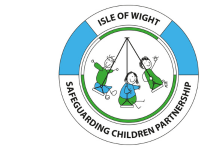Vulnerabilities & Risk factors for harmful behaviour
Vulnerabilities
Professionals should have an awareness of the role that inequality and discrimination can play in increasing the risk of a child being harmed by another child. However, it is important to remember that all children, contexts and situations are different; there is no ‘one size fits all’ guidance of which children are most at risk, as is the case for all safeguarding issues. Furthermore, it is important not to treat children in any potential ‘at risk’ categories as having been harmed if that is not their experience. The list below outlines factors that may make a child more vulnerable to child-on-child abuse:
- Those aged 10 and upwards.
- Girls and young women.
- Children with special educational needs and disabilities.
- Children with intra-familial abuse in their histories or those living with domestic abuse.
- Children in care.
- Children who have experienced the loss of a parent, sibling or friend through bereavement.
- Those children who are perceived as LGBTQ+.
- Black and minority ethnic children are often under-identified as having been harmed and over-identified as having harmed others.
It is important to be aware that children without any of these characteristics may be harmed by other children, and professionals should remain alert to this in their setting. The above list is intended to be supportive in understanding child-on-child abuse, and not as a generalisation or checklist.
Risk Factors
As with those children that may be more at risk of being harmed by child-on-child abuse, there are no set characteristics or circumstances that identify those children that are more likely to demonstrate abusive behaviours. The child demonstrating the abusive behaviour is themselves vulnerable and may have been harmed by children, parents or adults in the community prior to their abuse of another child/other children. Professionals should remember that a child that is harming another child in one setting, may be being harmed themselves somewhere else.
It is important for professionals to avoid making any generalisations about a child’s behaviour. If a child demonstrates violence in one setting, this does not mean they are ‘always’ violent ‘everywhere’ and just because it is has occurred this time, this does not mean it will necessarily happen again. Professionals should be aware of the implications of ‘labelling’ a child and recognise that this may result in a lack of professional curiosity and understanding regarding the context of the child’s behaviour. Instead, professionals should remember the importance of using facts, remaining curious about the situation and context of the behaviour to avoid over simplifying, generalising or ‘labelling’ children.
There are risk factors that may increase a child’s likelihood of demonstrating harmful behaviours towards other children. These are captured in the list below, but it should be understood that this is correlation, not causation. This means that whilst children who display harmful behaviour may have these factors present, this does not determine that a child who has these factors present in their life will display harmful behaviour.
- Poor school engagement
- Aggression towards peers and adults
- Low academic achievement
- Low involvement in prosocial activities. Pro-social activities are those that develop and demonstrate empathy towards others, cooperation and collaboration.
- A learning disability
- Speech, Language and Communication Needs, meaning that the child finds it hard to verbalise how they are feeling
- Anti-Social Behaviour in the community
- Poor supervision from parents/carers or more wider concerns around appropriateness of parenting
- Parental domestic abuse/mental health/substance misuse
- Missing episodes
- Evidence of demonstrating abusive behaviour in the home to siblings
- Evidence of previous incidences of child-on-child abuse (as the child being harmed or alleged to have harmed)
Professionals should ensure that they remain curious and focused on the individual lived experience of any child displaying harmful behaviour towards other children.

